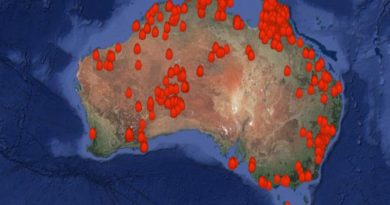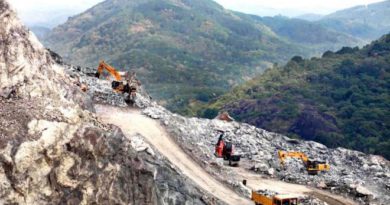Heat wave grips Kerala, claims three lives
Originally published on downtoearth.org.in | Rejimon Kuttappan
After surviving devastating floods last year, Kerala is now battling a heat wave. The state has lost three lives to it and has had 125 people sought medical assistance owing to rising temperatures.
The state government has issued an alert, released special funds for relief measures and circulated precautionary guidelines.
According to India Meteorological Department (IMD), the areas where the deaths took place saw the mercury rise to 34-36 degrees Celsius. Also, the IMD forecasts that maximum temperatures for March 26-28, 2019 would range between 36-38 degrees Celsius in several parts of the state.
On alert
The weather agency considers it a heat wave only if a station’s maximum temperature touches or crosses 40 degrees Celsius in plains and 30 degrees Celsius in the hills. Despite that, Kerala State Disaster Management Authority has declared it a heat wave and a state-specific disaster.
A senior state disaster management official said, “The state has cleared Rs 50 lakh for all district collectors to used as relief assistance. We have also issued different precautionary measures,” Sekhar Lukose Kuriakose, member secretary, Kerala State Disaster Management Authority (ex-officio) and Head (scientist), Kerala State Emergency Operations Centre, told Down To Earth (DTE).
“We had informed IMD about the heat wave in March first week. This heat wave may last for a few more days and this could be one of the hottest we have ever witnessed,” Sekhar added.
Relief measures
Health services too are on alert. Sarita RL, director, Kerala Health Services, told DTE that they are collecting a list of heat stroke victims, putting hospitals on alert and trying to reach out to people with precautionary guidelines.
“We are trying to reach out to people and tell them about ways to avoid heat strokes. We understand that certain circumstances don’t allow people to avoid the sun, especially those who do work in open areas. For them, we have advised using maximum protection,”
Also, the state government has announced that a mid-day break be given to workers working in open areas. “There is extreme heat in Kerala. So we are making arrangements for workers and have announced a three-hour break from noon to 3 pm for them,” said Sreedharan Tulasidharan, state labour commissioner.
Meanwhile, the Indian Medical Association’s Kerala chapter has released a note to the public on how to beat the sun.
It could be El Nino
Santhosh K, IMD Kerala director, blamed El Nino for this. “Temperatures rising a degree Celsius above normal is usual in pre-monsoon summer. But this time, it is up by 3 to 4 degrees Celsius, which is abnormal. We see the development of El Nino behind this,” said Santosh.
El Niño is a part of a routine climate pattern that occurs when sea surface temperatures in the tropical Pacific Ocean rise to above-normal levels for an extended period of time.
The opposite of El Nino, La Nina, is when sea surface temperatures in the central Pacific drop to lower-than-normal levels.
In December 2018, Climate Prediction Center at the US National Oceanic and Atmospheric Administration had predicted that there is an 80 per cent chance of a full-fledged El Nino to begin and last until at least the end of February 2019. And, on March 14, Climate Prediction Center’s advisory said El Nino conditions strengthened during February 2019 as above-average sea surface temperatures increased across the equatorial Pacific Ocean and the associated atmospheric anomalies became increasingly well defined.
Meanwhile, Jason Nicholls, senior meteorologist and international forecasting manager at AccuWeather, said this El Nino may be slightly enhancing warming by leading to a circulation pattern that favours subsidence over southern India. “This subsidence leads to a somewhat drier and warmer pattern,” he said.
The worst heat wave that the country has ever seen was in 2015 when 2,300 people died. Most of the deaths were concentrated in Andhra Pradesh, Telangana, Punjab, Odisha, and Bihar. Many states have since adopted a Heat Wave Action Plan to counter the negative impacts of extreme heat.




